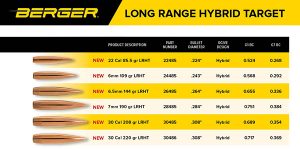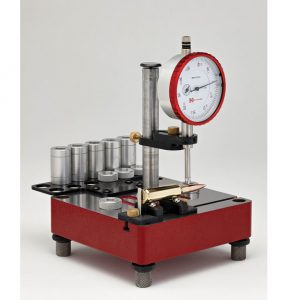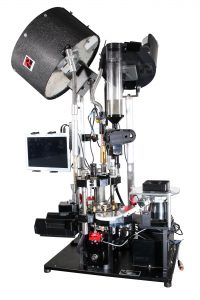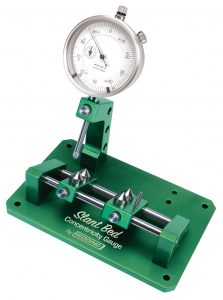By Art Merrill | Contributing Editor
Photos courtesy of manufactures
“What is ‘SHOT Show?’” acquaintances sometimes ask. “Is it a gun show?” My tongue-in-cheek response is often, “No, it’s a giddy capitalist celebration of our market economy.”
Boasting an overwhelming 12 miles of convoluted aisles clustered with booths where manufacturers, businesses and inventors from around the world display everything you can imagine – and, every year, something you might never have imagined – the National Shooting Sports Foundation’s Shooting, Hunting, Outdoor Trade Show is the annual golden opportunity for industry insiders to see what’s new in the shooting sports world.
Among the unusual new stuff at SHOT, you might be fascinated with the fire-and-forget, non-lethal Taser-like shotgun ammunition https://archepd.com/, or intrigued by the company offering a helicopter ride where you can be a SAW door gunner (the $500 fee includes 200 rounds of ammo) for a moment of glory https://gunshiphelicopters.com/, but our focus here is handloading. So, without further ado…
Berger

Berger Bullets brought to SHOT another half-dozen new offerings in precision rifle calibers.
Precision handloaders have really benefitted from the absorption of Berger Bullets into larger conglomerate Capstone Precision Group, which combined Berger’s reputation for quality design and performance with Capstone’s manufacturing muscle to bring us a comparative slew of new bullets in 2019 and 2020. At SHOT Show Berger introduced a half-dozen more in the Long Range Hybrid Target (LHRT) lineup, all in the most popular precision rifle calibers: .22, 6mm, 6.5mm, 7mm and .30-caliber. See the accompanying chart for specifics.
High ballistic coefficients and top-tier precision aside, LHRT bullets can perform like full-on secant ogive bullets, but without the latter’s sometimes-finicky cartridge overall length (COAL) requirements. They can also permit shorter COALs, allowing cartridges to feed through magazines. https://bergerbullets.com/
Hornady

The Hornady’s Multipurpose Measurement Tool condenses several precision gauges onto a single eight-pound platform.
Looking to the increased interest in hunting with suppressors, Hornady brought a new bullet to SHOT 2020, the Sub-X (Subsonic-eXpanding) bullet.
To take full advantage of the purpose of suppressors, bullets need to leave the muzzle at subsonic velocity, which means they must also expand reliably at low velocity while still providing deep penetration. Hornady’s Sub-X accomplishes this by utilizing a dense lead core, long grooves in its gilding metal jacket and topping the hollow point with Hornady’s Flex Tip insert. Hornady says the bullet, which sports a cannelure for crimping to perform in gas guns and other semi-autos, will expand at 900 fps.
Among tools, Hornady’s Multipurpose Measurement Tool combines a bullet runout gauge with several other important gauges at a single station. You know what the runout gauge does; the other gauges measure bullet ogive location, cartridge-base-to-ogive, headspace location and COAL. The base has leveling feet and weighs a hefty eight pounds, so it isn’t going to wander around the bench. Hornady includes five headspace bushings, seven bullet comparators and accessory mount.
Hornady opens up some room on our loading bench for the Multipurpose Measurement Tool with the introduction of a new, compact electronic powder scale/dispenser, the Auto Charge Pro. The unit features a touchscreen and customizable trickle speeds.
See these and more new products from Hornady at https://www.hornady.com/new-products/
Lyman

The Mark 7 is a uniquely modular reloading press that can be incrementally upgraded from manual to fully automatic, computerized, motor-driven operation.
It used to be that chronographs were large, complex and too expensive for Joe Handloader.
That slowly changed as technological advances reduced both the size and costs of chronographs, and now we can toss a $130 Chrony in our range bag almost as an afterthought. Similarly, it appears Lyman has begun evolving high volume, automated handloading with their acquisition of manufacturing the Mark 7 loading machine.
Okay, the $9,500 price tag for the commercial-line 10-stage press with fully automated digital drive system isn’t exactly going to put one on every loading bench, but $3,000 will get you started with the manually operated version, and you can upgrade piecemeal with drive motors and electronic sensors and auto-feed everything later. If that still sounds steep, consider that by, “high volume” we’re talking 3,500 rounds per hour, and that Lyman was able to knock thousands off the previous price simply because they have the capability to manufacture the Mark 7 at lesser overhead costs than could the smaller original company.
Even as a manual loader, the Mark 7 is impressive in its sheer mass and tight-fitting, superbly timed steel components that move like they’re sliding on greased ice – it’ll make any machine junkie go, “Ooooo!” And it’s as modular as an AR-15, permitting upgrading – even to the inclusion of a press-mounted case trimmer on one of the 10 stations – as whim and money permits. There’s a lot more detailed info at https://www.markvii-loading.com/loading-presses.html.
Again, while still pricey, the real import in Lyman’s Mark 7 is that it’s a big step toward bringing automated reloading closer to a reality for the enthusiastic handloader/shooter. At its current price point, it is still within the economic grasp of a gun club or an entrepreneur considering small-business commercial reloading.
Quality Cartridge
If you reload oddball calibers, Quality Cartridge is a name you probably know.
With a reputation founded on producing quality brass for obsolete cartridges – my last purchase from them was a batch of 30 Newton brass to neck up for a .35 Newton rifle – the company now moves forward into manufacturing lathe-turned, lead-free homogenous metal (“monolithic”) bullets for hunting, competition and self-defense.
The bullets appear to be bronze, or some alloy incorporating copper and brass. Quality Cartridge designed two models, the Marauder Hollow-Point pistol caliber and Game-StopR rifle caliber bullets, to expand over a wide range of impact velocities. The company says the Marauder’s “skived” nose produces larger-caliber performance in smaller-caliber cartridges. The Freight-Train Penetrator bullet is a true solid that will not rivet (bend) when striking bone or tunneling deep into tough muscle of large, dangerous game animals. The XrB (eXtreme-range Bore-rider) is a non-expanding rifle bullet for long range competition.
All three rifle bullets feature what Quality Cartridge calls, “Bore Rider technology,” which gives us pause for a moment to appreciate our elders. Bore riding is a design that goes back to black powder metallic cartridge days, wherein the forward part of the bullet is bore (rifling lands) diameter, and the after part, or some portion of it, is groove diameter.
For example, a .30-caliber bore riding bullet has a forward diameter measuring .300” with an after portion measuring .308” in diameter. Molds for casting lead bore riding bullets are still available, and we can, for example, attribute some of the Swiss K-31 rifle’s reputation for accuracy to the bore-riding bullet of Swiss 7.5×55 GP-11 ammunition. The advantage to bore riding is that the design encourages bullets and bore axes to be more precisely aligned with each other as the bullet transitions from throat to bore, improving accuracy. In the XrB bullet, Quality Cartridge is updating a valid 19th century concept with 21st century technology.
Unfortunately, the Quality Cartridge website https://www.qual-cart.com/ needs some 21st Century luvin’ and the downloadable catalog there is dated 2014. To request a 2020 catalog, call or fax the company at (301) 373-3719. Retail prices for 50 bullets run from about $40 to about $80, depending on the specific model.
Redding

Redding has made the runout gauge more ergonomic.
Some 80-odd years ago, a telephone designer decided to do away with the two-piece setup where the user held a speaker to his ear and leaned forward to speak into a separate microphone, and instead invented the one-piece handset incorporating both speaker and mic into one ergonomic unit.
Brilliant. Cellphones, of course, are designed for pockets, not people, and are as ergonomic as a two-by-four. Perhaps Redding will take on cellphones next, but for 2020 the company is sticking with reloading and has made the runout gauge more ergonomic with their Slant Bed Concentricity Gauge. By simply mounting the unit at an angle, Redding has reduced the measurement action from an arm movement to that of a finger. Mounting the dial at an angle makes it easier to read, too, and southpaws can readily reverse the unit’s actions by removing two mounting screws. Handloaders like beef, and Redding quality comes through in the beefy construction of the base and the polished, hardened stainless steel bearing surfaces.
Redding’s Imperial Sizing Die Wax has a new companion in Imperial Screw Thread Wax. Used in its own machine operations for years, Redding now makes its proprietary blend available commercially. This should be good stuff for die threads, screw threads and press rams, and anywhere we need a “stay-put” lubricant not subjected to high temperatures.
Customer feedback prompted Redding to repackage their dies into a new offering, the Type-S Elite Die Set, which allows the handloader the option of neck or full-length resizing, and includes their micrometer adjust Competition bullet seating die. Redding has also added 22 Creedmoor, 300 PRC and 6.5 Weatherby RPM to their die lineup.
See Redding’s 2020 online catalog here https://www.redding-reloading.com/online-catalog



